In 2015, to attract more visitors to the most northern part of the Scottish Highlands and to stimulate local trade and cultural activities, the North Highland Initiative (NHI), set up by Prince Charles, decided to launch the NC500 road (North Coast 500) . Hardly had it been created that, in 2015, the new touring road, sometimes nicknamed “Scotland’s Route 66”, was selected by Travel Now magazine as one of the six most beautiful coastal roads in the world:
- Cape Overberg in South Africa
- The Amalfi Coast in Italy
- The Atlantic Road in Norway
- The Pacific Coast Highway in America
- The NC500 road in Scotland
- The Coral Coast in Australia
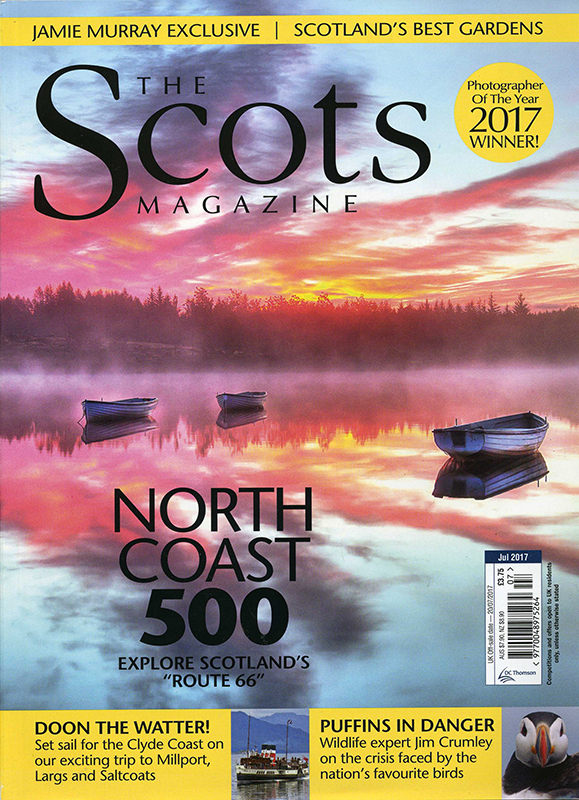
The Scots Magazine July 2017
The NC500 is constantly gaining in popularity. No wonder! One can find along this northern route a concentrate of what makes the Scottish landscapes so unique: a succession of wild mountains, lochs and lonely moors, sandy beaches and rocky shores, green patches of countryside dotted with sheep and cows and, scattered here and there, farms and white cottages. There are many lovely little towns and villages rich in history to discover on the road. Add to all that an exceptional quality of light and you will understand why the area is so popular.
Indeed, there are so many places where one could stop and say “Rest and be thankful” that the journey can take much longer than planned 😉
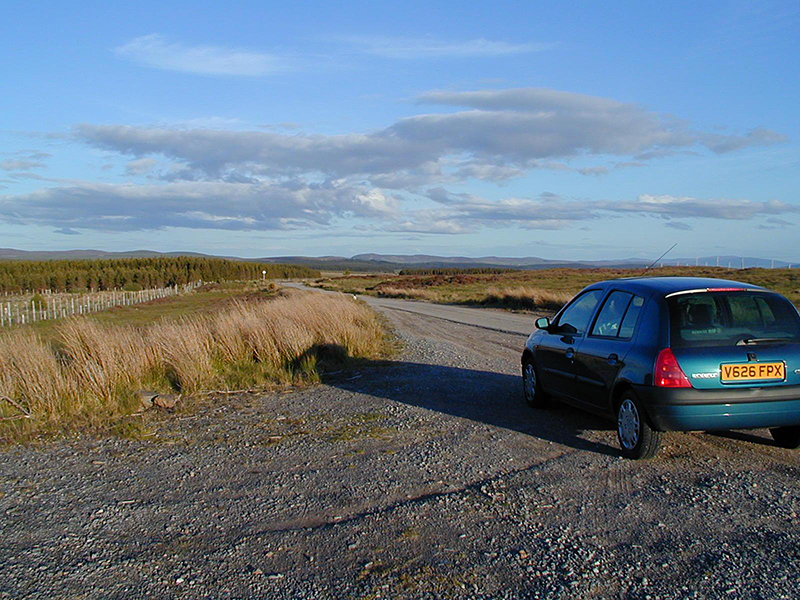
Route du Nord Itinéraire 1 © 2000 Scotiana
The Call of the North…
We simply call this road “La route du Nord”.
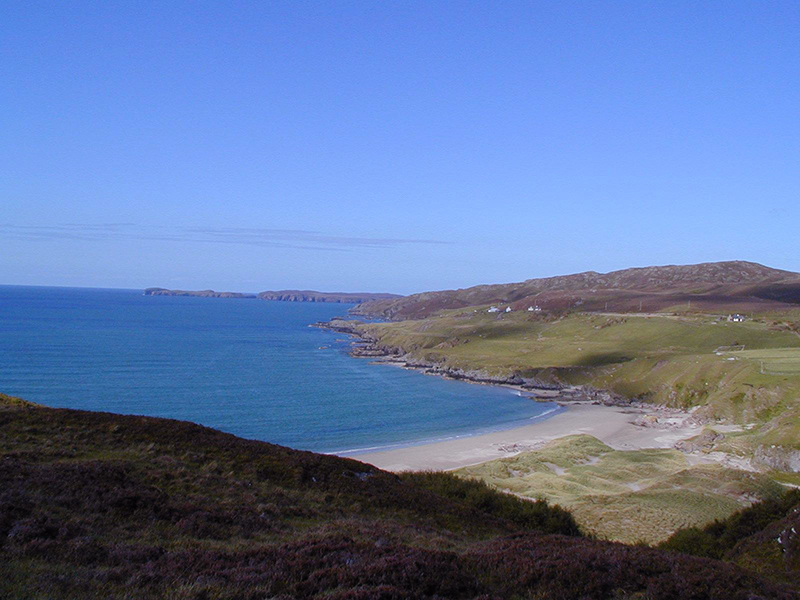
Northern coastal road in Scotland © 2000 Scotiana
The NC500 is a 516-mile (830 km) touring route forming a loop around the North West Highlands starting and ending in Inverness. It crosses six regions :
- Inverness-shire
- Black Isle
- Caithness
- Easter Ross
- Sutherland
- Wester Ross
Following on the map the NC500 itinerary it gives:
- Inverness
- Kessock Bridge
- A835
- A832
- A 890 southward if one wants to go to the Kyle of Lochalsh and visit the emblematic castle of Eilean Donan Castle
- northwards again along the magnificent west coast and up to Durness : A 896, A 832 again A 835 A 837 A 894 A 838
- eastwards in the direction of the mythical point John O’Groats
- then southward following the A99 and the A9 and back to the starting point at Inverness.
As many travellers before us, and among them a lot of celebrities, we’ve travelled the length and breadth of the North Highlands well before “Scotland’s Route 66” was launched in 2015. This nickname appears in the subtitle of David M. Addison’s Exploring the NC 500, a book I’m presently reading with extreme interest.
Exploring the NC 500 was published in 2017. This book is full of geographical data and historical anecdotes and written with much humour. While reading it and taking notes, with my map open on my desk, I try to remember our own adventures on the north roads.

Panorama of Inverness looking downstream to the Greig St Bridge Wikipedia
To follow in the steps of David D. Addison whose first chapter is entitled: “Inverness : Monsters, Myths and Writers”, this series of posts about the NC 500 will begin in Inverness, which doesn’t mean that our adventures on “La route du Nord” began there 😉
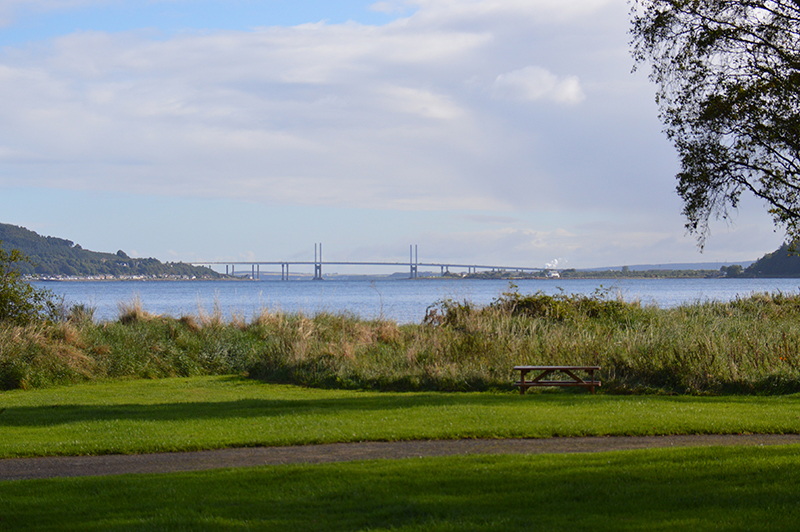
A view of Kessock Bridge from Bunchrew Caravan & Camping Park © 2012 Scotiana
The first thing we do on arriving in Inverness is to go to Bunchrew Caravan & Camping Park and pitch our tent there. This is a lovely campsite and one of our favourites in Scotland. In 2015, the weather was so bad that we were offered the opportunity to rent a holiday van. We jumped at the chance. It was for a short period of time and we were very lucky to get one at such a good price. We didn’t regret our experience and the weather was so awful that, for the first time in our eight journeys in Scotland, we decided to send our tent back to France.
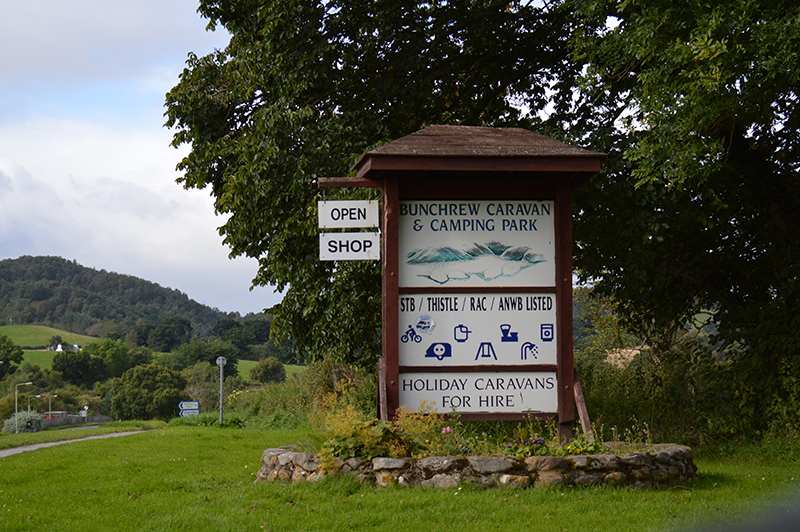
Bunchrew Caravan & Camping Park © 2012 Scotiana
In the beautiful quiet setting on the southern shore of the Beauly Firth, the Park enjoys wonderful views over the water to Ben Wyvis and the hills beyond.
Our 20 acres of peaceful sheltered parkland surrounded by mature trees offer a welcome haven for campers and caravanners with a friendly informal family-run atmosphere. Bunchrew is like the hub of a wheel – from here you can access the entire Highlands within a few hours. Just 60 miles to the west lies the West Coast, within 10 minutes drive you can be in the heart of europe’s last great wilderness. Inverness is just 3 miles to the east.
https://www.bunchrew-caravanpark.co.uk/
Inverness
Inverness is a very pleasant town. It is the administrative centre for the Highland council area and generally regarded as the ‘capital’ of the Highlands. In December 2000, it was granted city status by Queen Elizabeth.
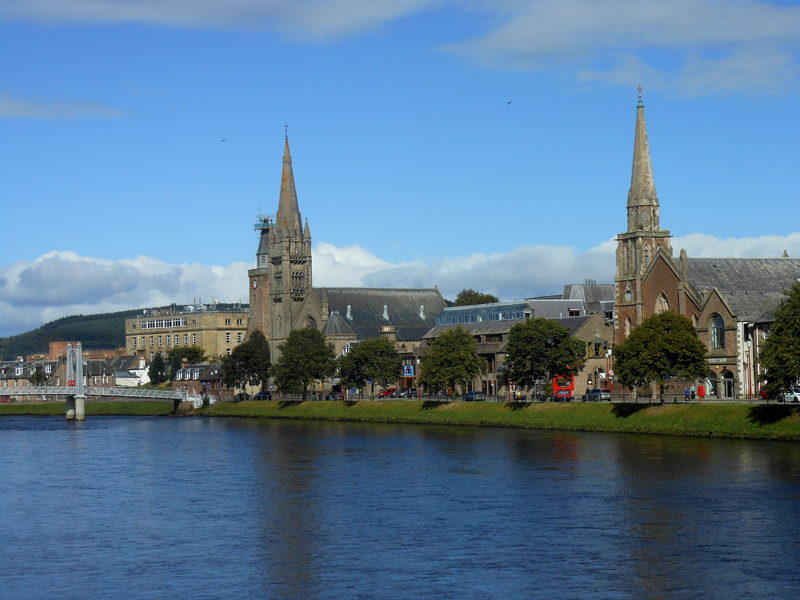
Inverness river Ness – footbridge and churches © 2012 Scotiana
Inverness is situated at the mouth of the River Ness which flows from Loch Ness into the Moray Firth and at the east end of the Great Glen which is occupied by four lochs: Loch Linnhe, Loch Lochy, Loch Oich and Loch Ness.
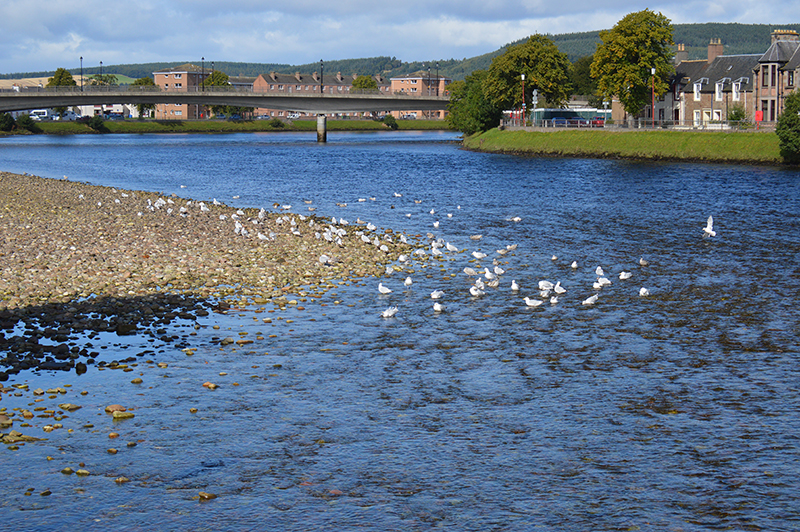
Seagulls on River Ness shore in Inverness © 2012 Scotiana
We went there several times but never stayed long enough to get an in-depth view of it. On reading Mr Addison’s book, I realize we’ve missed a few interesting things there: Abertaff House and Dunbar’s Hospital for example.
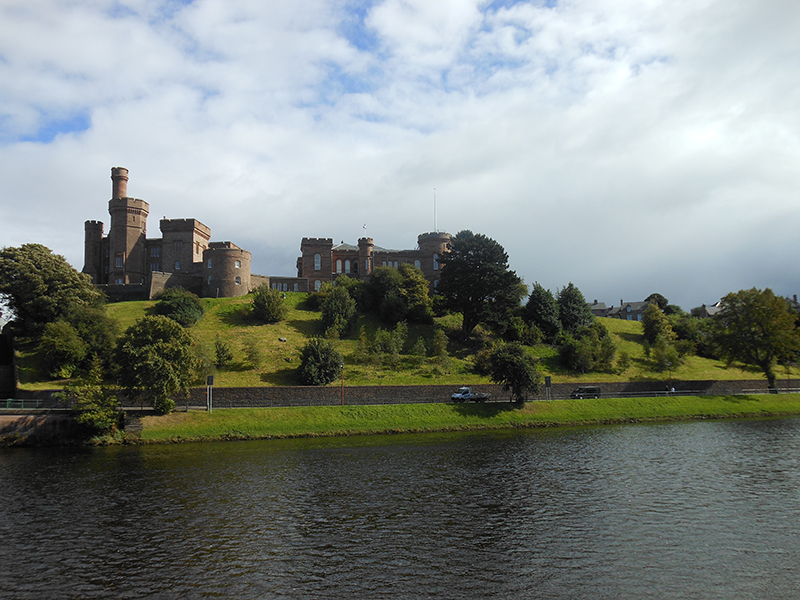
Inverness Castle © 2012 Scotiana
“Down below where the castle sits aloof on its grassy mound, the peat-coloured River Ness flows equally uncaringly and at a fair lick on its way north to be swallowed up by the Moray Firth. Surprisingly shallow at this point at least, it looks as if you could easily wade across it and, even if ou are as lacking in inches as I am, you would not be in any danger of getting your knees wet.”
(David M. Addison – Exploring the NC 500)
We didn’t venture to walk across the Ness but drove up to the castle and parked our car in front of it. We took a few panoramic views of Inverness and pictures of the statue of Flora MacDonald which stands in the middle of the esplanade.
Myths and history
Following the vicissitudes of history, several castles were successively built and destroyed in Inverness and practically nothing remains of the earlier forteresses. The pink, turreted and crenellated castle one can see today on the hill overlooking the River Ness, has nothing to do with Macbeth and was built in the 1830s to house courts and administrative buildings. It cannot be visited.
The history of Inverness dates back to the 6th century at least. Its beginning is often associated with the arrival of St Columba in the area, in AD 565, but it certainly dates back to much earlier times. St Columba who had settled on the island of Iona in 563, called on Pictish King Brude at his fortress of Craig Phadraig, a wooded hill situated near Inverness, to convert him and his subjects to Christianity. It is said that King Brude obstinately refused to open his doors to him but with the help of God and a bit of magic the heavy doors of the fortress finally opened. If St Columba did succeed in his religious mission what made him still more famous is the fact that, on his road to Brude’s realm, he managed to subdue the monstrous creature which lived – and maybe still lives – in Loch Ness, terrifying the local inhabitants.
Much has been written and debated about the mythical beast we affectionately call today Nessie but whether or not we believe in it (a kind of plesiosaur, some people say), the Loch Ness would no longer be the Loch Ness without its local star. It is interesting to note that a cousin of Nessie, called Morag, is also supposed to live in Loch Morar, a loch still deeper (310 m) than Loch Ness (272 m). We didn’t see either beast 😉
The Castles of Scotland by Martin Coventry is one of my favourite books about the subject below is what I’ve learned about Inverness Castle :
- Malcolm Canmore (1058-1093) destroyed a castle of Macbeth (1040-1057) at Inverness in 1057.
- David I (1124-1153) and William the Lyon (1165-1214) built a tower and courtyard, which was seized by Edward I of England (1272-1307), during the Wars of Independence but was recaptured for Robert the Bruce (1306-1329) in 1310
- James I (1407-1437) summoned 50 Highland chiefs, including Alexander, Lord of the Isles, to meet him at Inverness Castle in 1427. They were all imprisoned until they gave hostages and pledges of good behaviour. The Lord of the Isles returned in 1429 to burn the place, although the castle held out. His son, John, became Earl of Ross in 1437, and in 1455 he captured the castle during the Douglases’ fight against James II (1437-1460). For many years he acted as a semi-independent prince, but in 1476 was forced to submit to James III, losing both the Ross earldom and the Lordship of the Isles. He became a pensioner at court, although the MacDonalds were not subdued for many years. James I, James II and James IV all stayed at Inverness Castle.
- In 1508 the Gordon, Earl of Huntly, was made keeper of the castle, previously having been held by the Mackintoshes, and in 1555 Mary de Guise was imprisoned here. In 1562 Mary Queen of Scots’s forces captured the castle from the Gordons and hanged the keeper. The Marquis of Montrose failed to take the castle in 1644, but a party of Royalists seized it in 1649 and it was badly damaged.
- The Castle was then in a bad state of repair, and Cromwell (1599-1654) built a citadel nearby, which Charles II destroyed at the request of Highland chiefs in the 1660s. A clock tower marks the site, and parts of the ramparts and bastions survive.
- The old castle was patched up by the government. It was captured by the Jacobites in 1715, but was retaken by Hanoverian forces the same year. It was repaired again in 1718 but was finally captured and blown up by the Jacobites in 1746 after the Battle of Culloden.
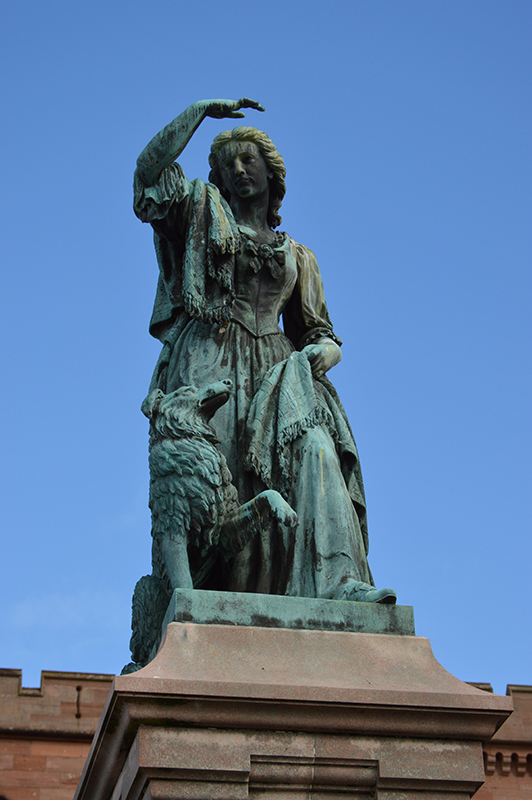
The statue of Flora MacDonald on the esplanade of Inverness Castle © 2012 Scotiana
The statue represents Flora MacDonald, the very popular Scottish heroine who helped Bonnie Prince Charlie to escape after his defeat at the Battle of Culloden on 16 April 1746. After this act of courage, Flora MacDonald was arrested and imprisoned in Dunstaffnage Castle, held for a short time in the Tower of London before being released in 1747, under a general amnesty. She returned to Skye where she married Allan Macdonald of Kingsburgh and finally both emigrated to North Carolina.
What about the statue of the dog? It reminded me of Maida, Sir Walter Scott’s favourite dog represented with him on the Edinburgh Monument.
I searched on the Internet and fell upon the following dialogue which I can’t help sharing with you 😉
Seanachie : “I was at the castle in Inverness on Friday. On the drive leading to the castle there is a statue of Flora MacDonald. She has her dog with her. Does any history buff know the name of the dog please? Thanks”
MacCathmhaoil : “Not sure she actually had a dog, I was told the dog is there to represent “courage and fidelity”!”
Seanachie : (…) “several people told me that the dog definitely has a name and it is Gaelic. Even if the dog is artistic license of the sculptor I am pretty sure the dog has a name.”
McClef : “When I was last there she also had a seagull perched on her head!”
(“Marks the Scot – An on-line community of kilt wearers”)
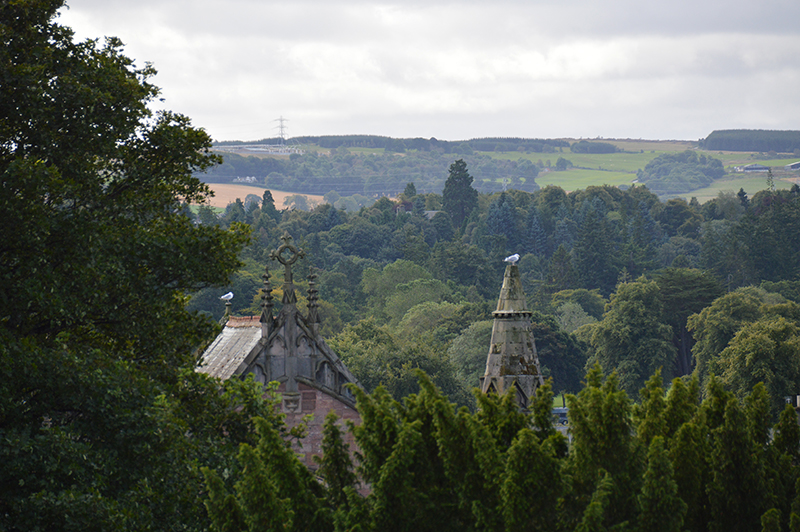
A view of the area landscape with cathedral from Inverness Castle © 2012 Scotiana
Seagulls everywhere…

Here’s a view of Inverness cathedral taken from the esplanade of the castle…
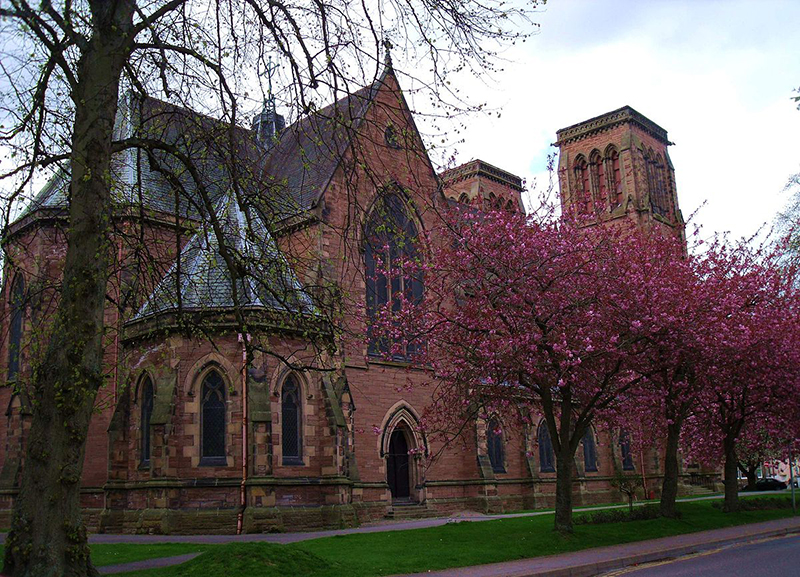
Inverness St Andrews Cathedral from Bishops road Wikipedia
Dedicated to St Andrews it is the most northern cathedral of mainland Scotland (Saint Magnus Cathedral, situated in Kirkwall, Orkney, is Scotland’s most northern cathedral).
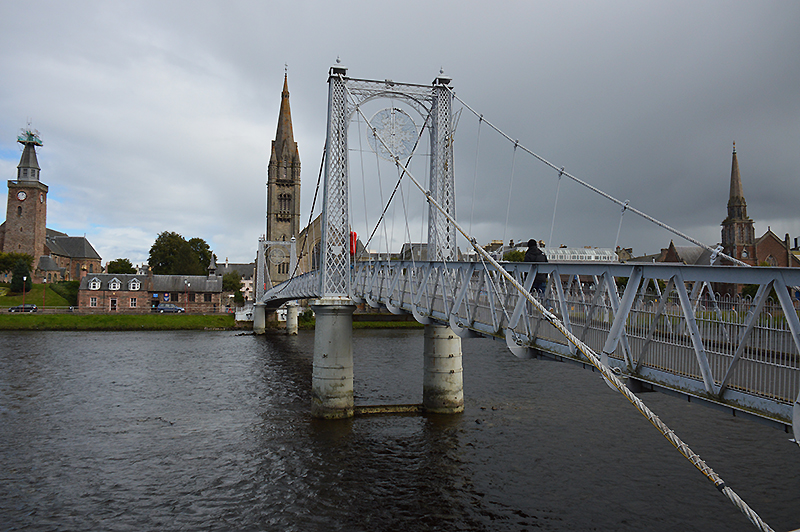
View of the lovely Greig Street Bridge built in 1881 © 2012 Scotiana
Bridges of Inverness
The history of bridges, like that of castles, reflects the vicissitudes of history and.. of the weather too. In the olden times the only bridge across the River Ness was built of oak. It was destroyed by Donald, the powerful Lord of the Isles. Another wooden bridge lasted up to mid 17th century when it collapsed. It was replaced by a stone bridge which was swept away in a flood.
Today, there are a number of bridges to cross the Ness.
Crossing Moray and Beauly Firths
- Kessock Road Bridge (road) : this magnificent bridge opened in 1982 and it connects Inverness to the Black Isle via the A9.
On the river Ness
- Ness Viaduct Rail Bridge (rail)
- Waterloo Road Bridge (road)
- A 82 Friars Road Bridge (road)
- Greig Street Foot Bridge (pedestrian)
- Ness Road Bridge (road)
- Infirmary Foot Bridge (pedestrian)
- Ness Island Foot Bridges (pedestrian)
and on the Caledonian Canal
- Tomnahirich and Muirtown Road Bridges (road)
- Clachnaharry Rail Bridge (rail)
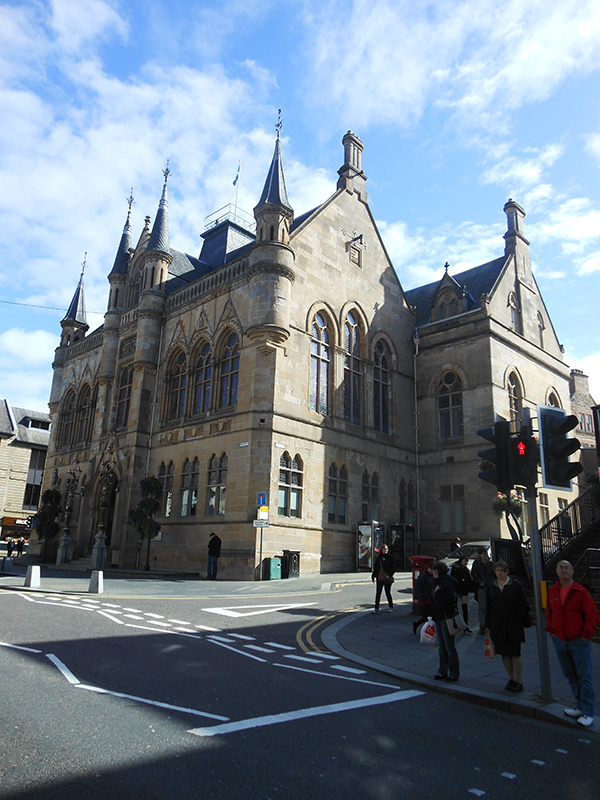
Inverness Town House © 2012 Scotiana
The Town House built in Victorian Gothic Style was completed in 1882. It was in this building that the only cabinet meeting ever held outside London took place in 1921 when Lloyd George was Prime Minister.
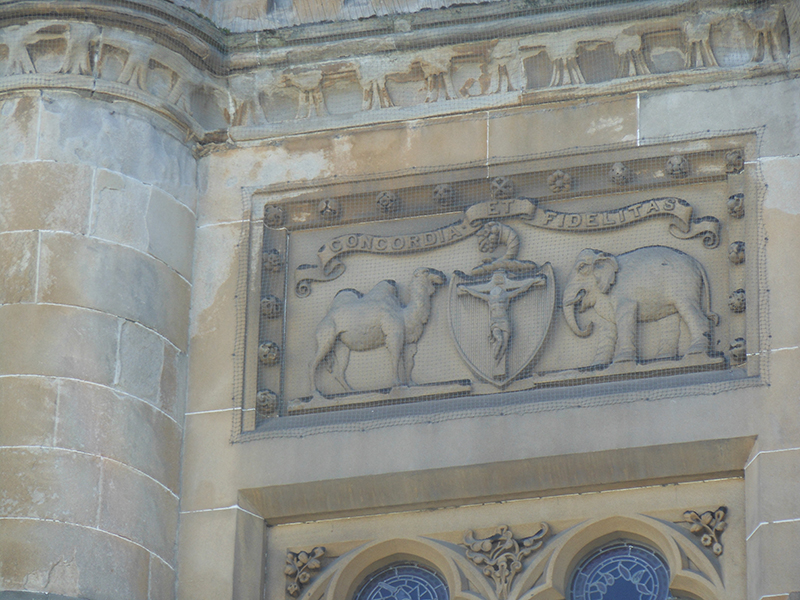
Inverness Town House city arms © 2012 Scotiana
One can see on the coat of arms sculpted above the door of Inverness Town House a crucifix strangely surrounded by an elephant and a camel which are said to be a reminder of Inverness’ foreign trade links and the motto “Concordia et Fidelitas” is written above.
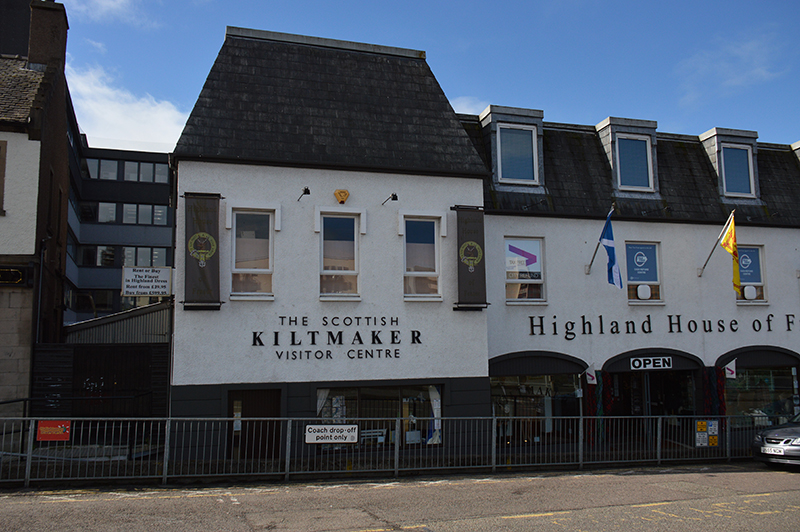
Inverness The Scottish Kiltmaker Visitor Centre © 2012 Scotiana
It’s a pity we didn’t have time to visit the Scottish Kiltmaker visitor, we should have learned everything about the making of kilts and tartans…
“Je suis prest a vous servier”
Welcome to Highland House of Fraser, where we are steeped in the tradition of Highland Dress and strive to offer quality products made in Scotland/United Kingdom and Ireland. Ceud Mìle Fàilte! our traditional Gaelic greeting which means “a hundred thousand welcomes”.
In May 2004 we took over the retail and manufacturing of Hector Russell Ltd that was located at our premises in Inverness. Thus, the traditional kilt manufacturing methods continue as they have for over 50 years at our premises and we can boast the finest traditionally handsewn kilts, where our kiltmakers have a recognised Scottish Qualifications Authority National Award in “Traditional Handcraft Kilt Manufacturing. I was a Director with Hector Russell kiltmaker for over 40 years and therefore, please be assured that our staff are very knowledgeable in all aspects of kiltmaking, Highland Dress and indeed, Highland Culture and Scottish Heritage. I am very proud to carry on the traditional manufacturing skills of kiltmaking and offer the highest standards of product and customer service.
Please peruse our collection of Kilts, Highland Dress accessories, Tartans, Tweeds, Textiles, Clan items, Jewellery and our extensive range of gifts. We offer a Kilt Rental Service and when in Inverness, a visit to our unique exhibition; The Scottish Kiltmaker Visitor Centre, is an attraction that should not be missed.
Our motto here at Highland House of Fraser is “je suis prest a vous servier”, meaning “I am ready to serve”.
A warm, friendly service awaits you and we look forward to being of service.
http://www.highlandhouseoffraser.com/about.asp
A few landmarks around Inverness :
- Culloden
- Fort George
- Cawdor Castle
- Clava Cairns
- Loch Ness
- Urquhart Castle
- Black Isle
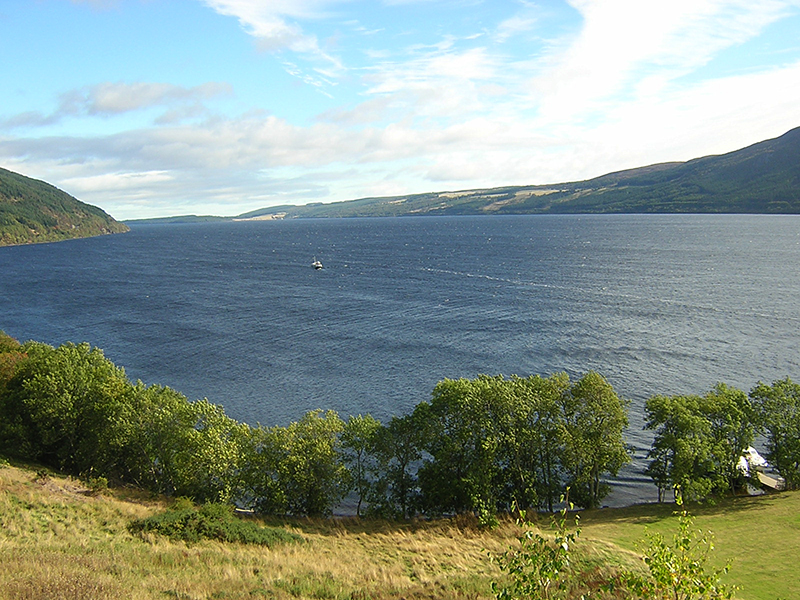
A view of Loch Ness from Urquhart Castle © 2000 Scotiana
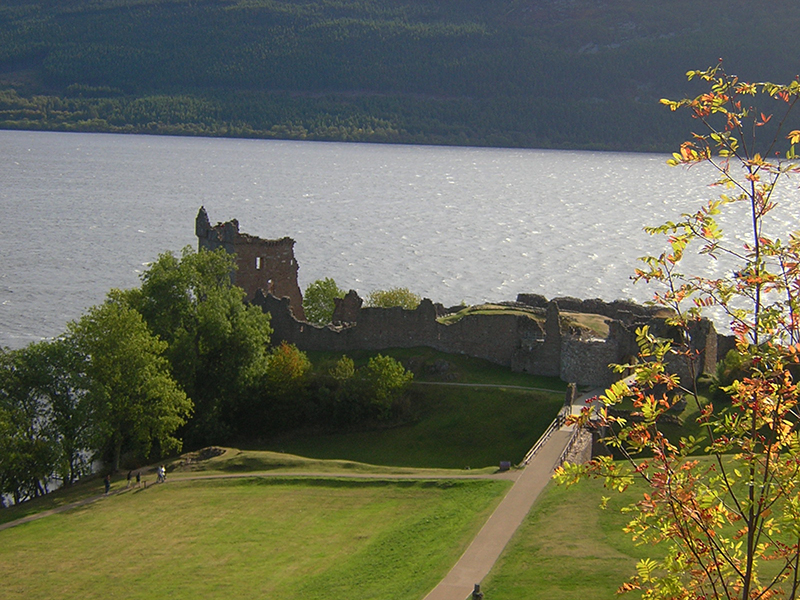
Urquhart Castle on Loch Ness © 2003 Scotiana
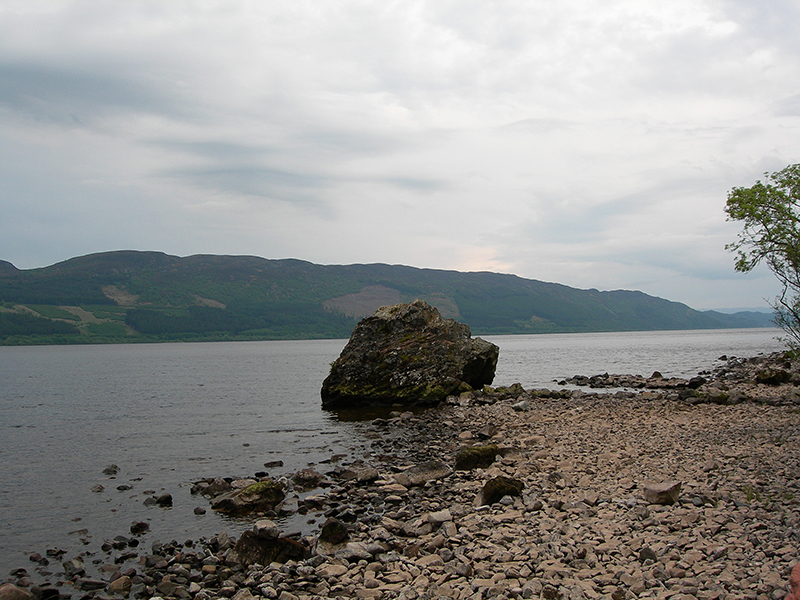
Loch Ness pebble beach & rock © 2006 Scotiana
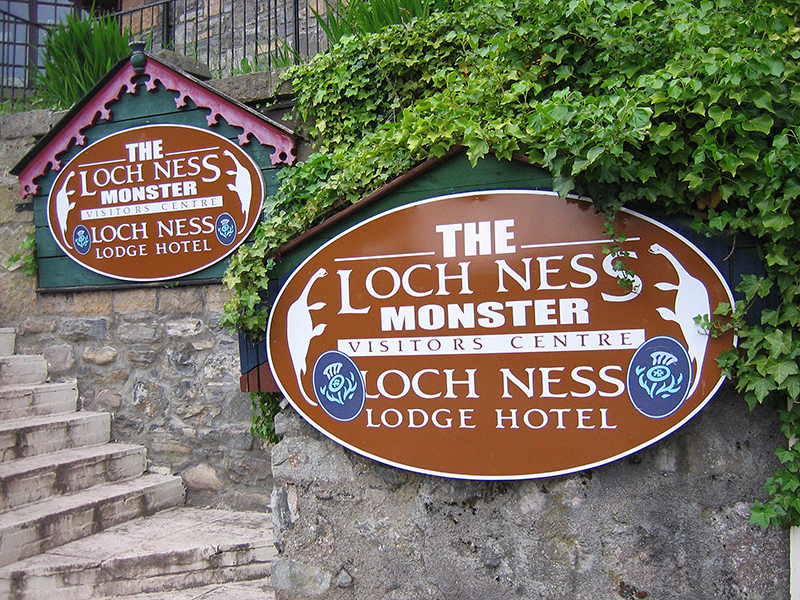
The Loch Ness Monster Visitors Centre © 2006 Scotiana
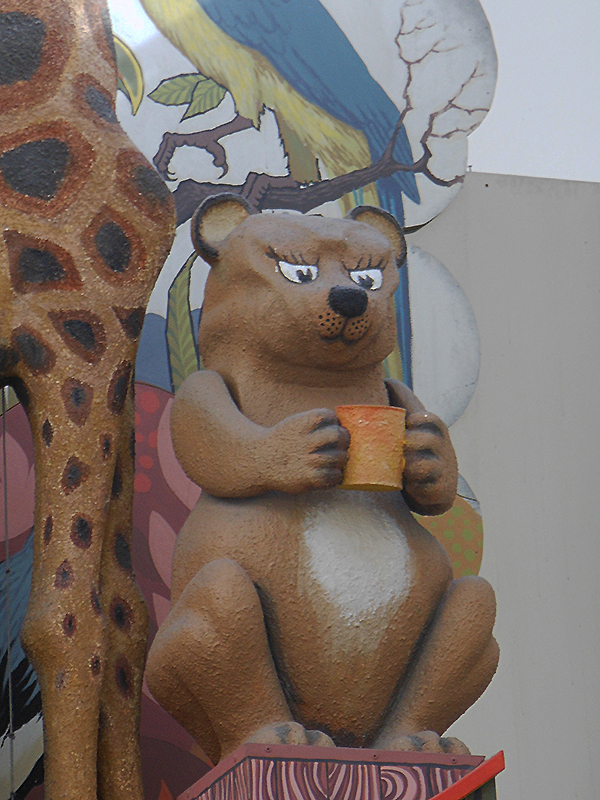
Inverness Eastgate Centre animated clock bear © 2015 Scotiana
Now a fantasy note to end my post ;-). Our teddy bear mascots would certainly have loved to share a drink with this bear, grumpy as it is… but I let Janice tell you more about the place where you can find it. It’s a lovely place for those who have kept their child spirit. Some of our readers must have already guessed where it is 😉
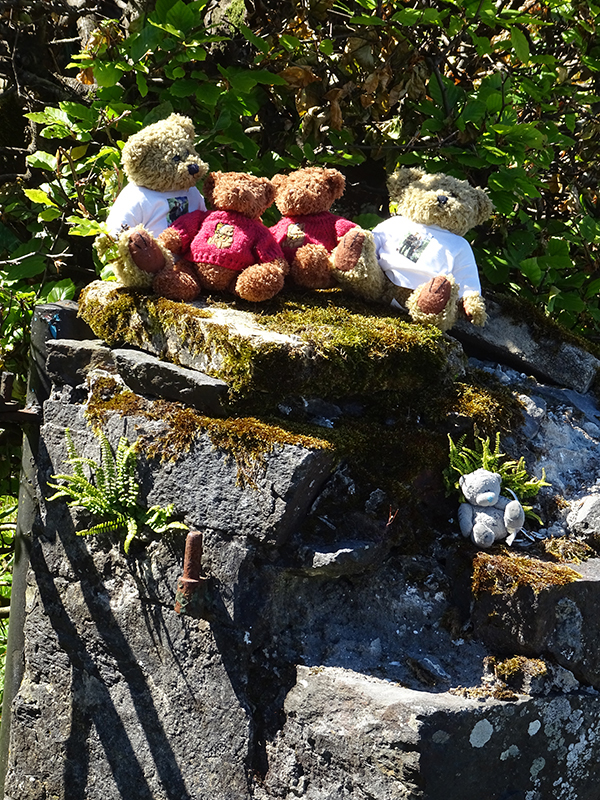
The whole team of mascots in Scotland © 2015 Scotiana
Bonne lecture !
Á bientôt for another place to discover on the “Route du Nord” 😉
Mairiuna.
Bibliography
Below are a few gold nuggets taken from my favourite volumes:

I entered Inverness. Moray Firth was as blue as the sea at Capri and the light in the streets was as glaring as in Tangier. It was very pleasant ; but it was all slightly incredible ! (…)
I thought until I saw it that Edinburgh was the most romantic city in Scotland. Now I am uncertain. It is not right that one country should have two such candidates. Edinburgh is more magnificent, enthroned, as it is, in authentic regality ; but Inverness is more – romantic. It has the distinction which a river only can give to a city, a broad, lovely river that flows through the heart of it. Is there to be seen from any other city in Scotland a lovelier coast-line than that of Moray Firth curving north to Tarbat Ness and eastward to Burghead ? Blue water reflects blue hills. There are the landlocked firths of Beauly and Inverness which lie peacefully at the very doors of this city. From high ground you look south-west down the valley where the broad brown Ness flows seaward from its loch; and round you the Highlands lie piled hill against hill, wood against wood, mountain against mountain, in every shade of blue. Inverness is the watch-tower of the Highlands.The Castle on its high mound – not, I believe, the site of Macbeth’s castle – is a window that looks out over all north-west Scotland, and wherever you turn is something perfect and unfortettable – mountain, sea, or firth. Go at sunset to the turret of the Castle and watch the sun sink below the western hills. Of all the sunsets to be seen in Scotland this is, I think, the most memorable.
(In Search of Scotland – HV Morton – 1929)
HV Morton is second to none to write such pages and I let you discover in his book on what funny anecdote he ends his paragraph 😉
The fascinating old volume of John T. Reid containing the story of a travel he did in Scotland in 1876 and his own engravings of the Scottish landscapes are now definitely associated with Mairi Hedderwick’s illustrated version of the same journey she did, more than a century later, in the steps of his predecessor with her box of pastel colours. Mairi Hedderwick’s books are lovely and very interesting to read.
I first came across John Reid’s Art Rambles in the Highlands & Islands in a cottage on the Isle of Sky in the autumn of ’89. The maroon and gold-embossed front cover of the book did not have a back and the linen thread stitching frayed through the flapping spine. The daughter of my hosts, the MacLachlans, had found the copy in a secondhand bookshop in Greenwich and sent the birthday gift back to one of the areas that had inspired John T. Reid’s sketchings of 1876.
Long I have lingered by the banks of Ness, looking on the town clinging to and rising above its banks; often have I gone to the castle hill to trace the windings of the stream, which was ever smiling back or reflecting the sadder tones of the sky, and to gaze on the distant land of mountain and plain; and I have also spent many hours in rapt admiration of the sylvan pictures that render the walk through the islands on the Ness a walk of walks: it yielded a joy as deep as that I received from the walks on Goat Island, within hearing and seeing of the rapid-flowing waters of Niagara. The rivers are widely different. The Ness is shallow and peaceful, and the murmur of its flowing falls plaintively on the ear, in sympathy with the song of the birds, and the summer tintings of the trees, and the musings of those who seem to love each turning in the paths; while the waters of the rapids of Niagara make the onlooker hold back his breath, and keep back as far as possible from the wild leaping of the swift-rushing waters.
In passing through Inverness, do not grudge to halt a night to visit the islands ; if the night is moonlit, revisit the scene, and see it under the mellow beams. Another place within easy reach is Culloden Moor ; the railway will take you within a few miles. You will have a real country walk and a fine view of Moray Forth and Loch Beauly by the way, and mayhap a little seven-year-old will lead you through curious windings among a forest of the future.
The field still retains its sad interest, and the pile of stones gathered recently to prepare for raising a suitable memorial have already got the grey lichens and the tintings which nature gives, and it looks as if raised over the graves of the slain. The moor is very bleack, and a circular patch is dyked off with turf and hemmed in by a wood of young firs. Towards evening, as the shades deepened and the ground darkened, and the impenetrable mystery of the fir woods was intensified, the scene spoke more powerfully of the battle which left many of our kilted heroes on the field cold and stiff. We will let the shade deepen into night, and under the curtain of night leave the scene and its sadness, while we seek to have glimpses of other places made sacred to us by other associations.
“Once, on another occasion, when the blessed man stayed for some days in the land of the Picts, he had to cross the River Ness. When he reached its bank, he saw some of the local people burying a poor fellow. They said they had seen a water beast snatch him and maul him savagely as he was swimming not long before. Although some men had put out in a little boat to rescue him, they were too late, but, reaching out with hooks, they had hauled in his wretched corpse. The blessed man, having been told all this, astonished them by sending one of his companions to swim across the river and sail back to him in a dinghy that was on the further bank. At the command of the holy and praiseworthy man, Luigne moccu Min obeyed without hesitation. He took off his clothes except for a tunic and dived into the water. But the beast was lying low on the riverbed, its appetite not so much sated as whetted for prey. It could sense that the water above was stirred by the swimmer, and suddenly swam up to the surface, rushing open-mouthed with a great roar towards the man as he was swimming midstream. All the bystanders, both the heathen and the brethren, froze in terror, but the blessed man looking on raised his holy hand and made the sign of the cross in the air, and invoking the name of God, he commanded the fierce beast, saying:
‘Go no further. Do not touch the man. Go back at once.’
At the sound of the saint’s voice, the beast fled in terror so fast one might have thought it was pulled back with ropes. But it had got so close to Luigne swimming that there was no more than the length of a pole between man and beast. The brethren were amazed to see that the beast had gone and that their fellow-soldier Luigne returned to them untouched and safe in the dinghy, and they glorified God in the blessed man. Even the heathen natives who were present at that time were so moved by the greatness of the miracle they had witnessed that they too magnified the God of the Christians.”
(Adomnán of Iona – Life of St Columba Book II Story 27)







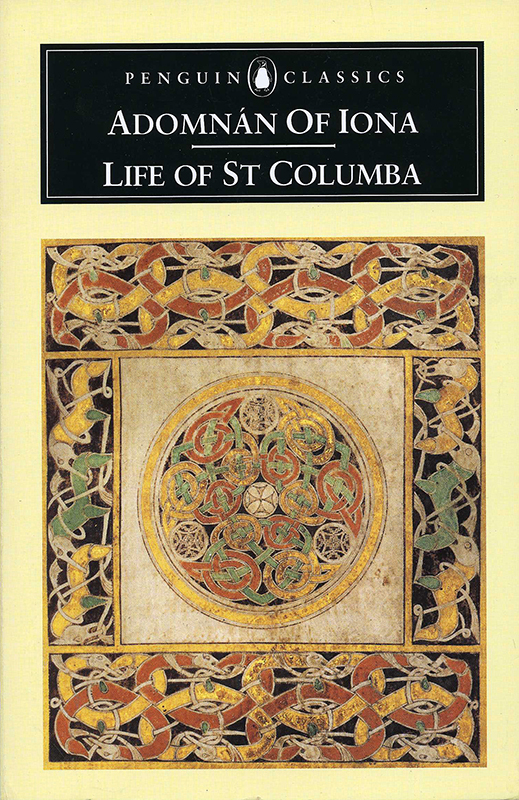
Leave a Reply